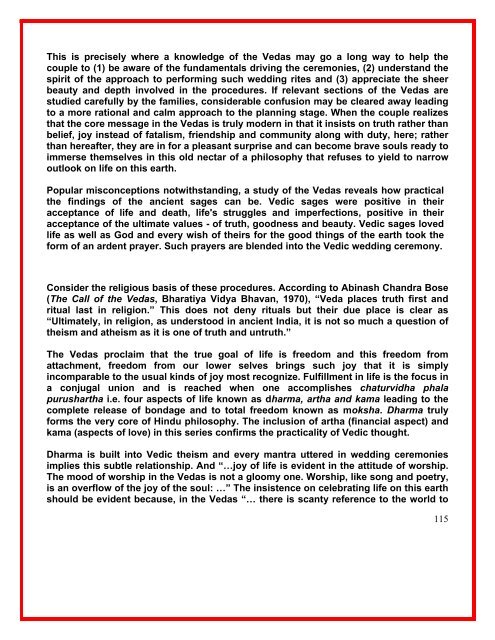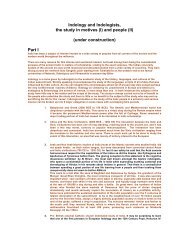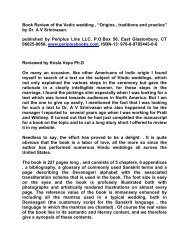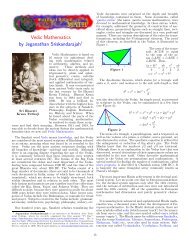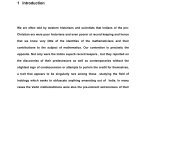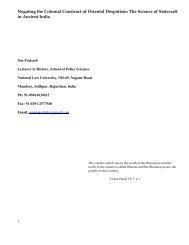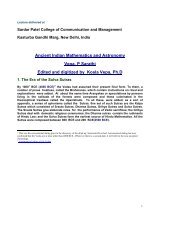The Dhaarmik Traditions - Indic Studies Foundation
The Dhaarmik Traditions - Indic Studies Foundation
The Dhaarmik Traditions - Indic Studies Foundation
You also want an ePaper? Increase the reach of your titles
YUMPU automatically turns print PDFs into web optimized ePapers that Google loves.
This is precisely where a knowledge of the Vedas may go a long way to help the<br />
couple to (1) be aware of the fundamentals driving the ceremonies, (2) understand the<br />
spirit of the approach to performing such wedding rites and (3) appreciate the sheer<br />
beauty and depth involved in the procedures. If relevant sections of the Vedas are<br />
studied carefully by the families, considerable confusion may be cleared away leading<br />
to a more rational and calm approach to the planning stage. When the couple realizes<br />
that the core message in the Vedas is truly modern in that it insists on truth rather than<br />
belief, joy instead of fatalism, friendship and community along with duty, here; rather<br />
than hereafter, they are in for a pleasant surprise and can become brave souls ready to<br />
immerse themselves in this old nectar of a philosophy that refuses to yield to narrow<br />
outlook on life on this earth.<br />
Popular misconceptions notwithstanding, a study of the Vedas reveals how practical<br />
the findings of the ancient sages can be. Vedic sages were positive in their<br />
acceptance of life and death, life's struggles and imperfections, positive in their<br />
acceptance of the ultimate values - of truth, goodness and beauty. Vedic sages loved<br />
life as well as God and every wish of theirs for the good things of the earth took the<br />
form of an ardent prayer. Such prayers are blended into the Vedic wedding ceremony.<br />
Consider the religious basis of these procedures. According to Abinash Chandra Bose<br />
(<strong>The</strong> Call of the Vedas, Bharatiya Vidya Bhavan, 1970), “Veda places truth first and<br />
ritual last in religion.” This does not deny rituals but their due place is clear as<br />
“Ultimately, in religion, as understood in ancient India, it is not so much a question of<br />
theism and atheism as it is one of truth and untruth.”<br />
<strong>The</strong> Vedas proclaim that the true goal of life is freedom and this freedom from<br />
attachment, freedom from our lower selves brings such joy that it is simply<br />
incomparable to the usual kinds of joy most recognize. Fulfillment in life is the focus in<br />
a conjugal union and is reached when one accomplishes chaturvidha phala<br />
purushartha i.e. four aspects of life known as dharma, artha and kama leading to the<br />
complete release of bondage and to total freedom known as moksha. Dharma truly<br />
forms the very core of Hindu philosophy. <strong>The</strong> inclusion of artha (financial aspect) and<br />
kama (aspects of love) in this series confirms the practicality of Vedic thought.<br />
Dharma is built into Vedic theism and every mantra uttered in wedding ceremonies<br />
implies this subtle relationship. And “…joy of life is evident in the attitude of worship.<br />
<strong>The</strong> mood of worship in the Vedas is not a gloomy one. Worship, like song and poetry,<br />
is an overflow of the joy of the soul: …” <strong>The</strong> insistence on celebrating life on this earth<br />
should be evident because, in the Vedas “… there is scanty reference to the world to<br />
115


